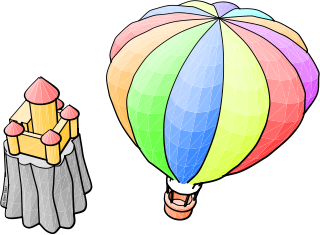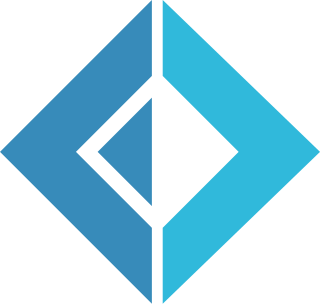Design
An action is defined by Action-Executer, Action-Data, and Action-Condition. An action has an owner which defines the scope of data available for the action.
There are three types of actions:
- Method-Invoke Action – It is the execution of a method of a class. The Action-Executer is the class defining the method. The Action-Data is the values provided to the method parameters. Method return value can be assigned to a value (a property or a variable).
- Property-Setting Action – It assigns a value to a property of a class. The Action-Executer is the class. The Action-Data is the value provided to the property.
- Event-Firing Action – It fires an event of a class being developed. The Action-Executer is the class. The Action-Data is the values provided to the event parameters.
Action data can be a constant, a variable, a method/event parameter, a property of a class/variable/parameter/property, or a math expression. An Action Condition is a math expression evaluated to a Boolean value. A math expression is a math formula with its variables linked to constants, properties, variables, parameters, and math expressions. A math expression must be displayed and edited graphically for codeless and visual programming and for intuitive using of the programming tools. The math expression programming tool must be able to handle math elements and functions developed by third parties to enable unlimited expansions.
Implementation
Limnor Studio is a newer implementation of codeless visual programming by "properties, methods, events and actions".
Limnor Studio implements "properties, methods, events and actions" on Microsoft .NET types. Software is developed by developing classes, just as all object-oriented programming languages do, but it is done visually. Developers derive new classes from existing classes. The existing classes are from .NET libraries made by any companies or individuals, using any programming languages or programming systems, including Limnor Studio. Limnor Studio compiler generates C# source code from visual programming representations. It uses C# compiler to generate the programming results, EXE or DLL files.
A base class for math functions provides a framework for visually display the math expressions in original math expressions in programming instead of texture formation. For example, developers do programming using formula like  instead of writing something like Math.sqrt((x0-x1)*(x0-x1)+(y0-y1)*(y0-y1)). A math expression editor may handle math classes derived from the base math class, allowing third parties to develop new math functions to be used visually.
instead of writing something like Math.sqrt((x0-x1)*(x0-x1)+(y0-y1)*(y0-y1)). A math expression editor may handle math classes derived from the base math class, allowing third parties to develop new math functions to be used visually.
The developers use "action diagram" (flowchart) to form programming logics visually and intuitively.
Visual programming is better done by more than one way. Limnor Studio uses a plug-ins system to allow different visual programming systems to work together. UI designer, which represents classes in UI form and icons, is one visual programming system; object-explorer, which represents classes in tree-views, is another visual programming system. They are totally independent of each other even though they represent and work on the same class being developed. Other independent visual programming systems can be developed and plugged in by implementing certain interfaces, for example, visual data-flow, visual control-flow, UML, etc.
Eiffel is an object-oriented programming language designed by Bertrand Meyer and Eiffel Software. Meyer conceived the language in 1985 with the goal of increasing the reliability of commercial software development; the first version becoming available in 1986. In 2005, Eiffel became an ISO-standardized language.

JavaScript, often abbreviated as JS, is a programming language that is one of the core technologies of the World Wide Web, alongside HTML and CSS. As of 2022, 98% of websites use JavaScript on the client side for webpage behavior, often incorporating third-party libraries. All major web browsers have a dedicated JavaScript engine to execute the code on users' devices.

MATLAB is a proprietary multi-paradigm programming language and numeric computing environment developed by MathWorks. MATLAB allows matrix manipulations, plotting of functions and data, implementation of algorithms, creation of user interfaces, and interfacing with programs written in other languages.

Smalltalk is a purely object oriented programming language (OOP), created in the 1970s for educational use, specifically for constructionist learning, at Xerox PARC by Learning Research Group (LRG) scientists, including Alan Kay, Dan Ingalls, Adele Goldberg, Ted Kaehler, Diana Merry, and Scott Wallace.
In programming languages, a closure, also lexical closure or function closure, is a technique for implementing lexically scoped name binding in a language with first-class functions. Operationally, a closure is a record storing a function together with an environment. The environment is a mapping associating each free variable of the function with the value or reference to which the name was bound when the closure was created. Unlike a plain function, a closure allows the function to access those captured variables through the closure's copies of their values or references, even when the function is invoked outside their scope.
Unlambda is a minimal, "nearly pure" functional programming language invented by David Madore. It is based on combinatory logic, an expression system without the lambda operator or free variables. It relies mainly on two built-in functions and an apply operator. These alone make it Turing-complete, but there are also some input/output (I/O) functions to enable interacting with the user, some shortcut functions, and a lazy evaluation function. Variables are unsupported.

Visual Basic (VB), originally called Visual Basic .NET (VB.NET), is a multi-paradigm, object-oriented programming language, implemented on .NET, Mono, and the .NET Framework. Microsoft launched VB.NET in 2002 as the successor to its original Visual Basic language, the last version of which was Visual Basic 6.0. Although the ".NET" portion of the name was dropped in 2005, this article uses "Visual Basic [.NET]" to refer to all Visual Basic languages released since 2002, in order to distinguish between them and the classic Visual Basic. Along with C# and F#, it is one of the three main languages targeting the .NET ecosystem. As of March 11, 2020, Microsoft announced that evolution of the VB.NET language has concluded.

F# is a functional-first, general-purpose, strongly typed, multi-paradigm programming language that encompasses functional, imperative, and object-oriented programming methods. It is most often used as a cross-platform Common Language Infrastructure (CLI) language on .NET, but can also generate JavaScript and graphics processing unit (GPU) code.

Visual IRC (ViRC) is an open-source Internet Relay Chat client for the Windows operating system. Unlike many other IRC clients, nearly all of the functionality in ViRC is driven by the included IRC script, with the result that the program's behavior can be extended or changed without altering the source code.

In computing, a visual programming language is any programming language that lets users create programs by manipulating program elements graphically rather than by specifying them textually. A VPL allows programming with visual expressions, spatial arrangements of text and graphic symbols, used either as elements of syntax or secondary notation. For example, many VPLs are based on the idea of "boxes and arrows", where boxes or other screen objects are treated as entities, connected by arrows, lines or arcs which represent relations.

Apache Groovy is a Java-syntax-compatible object-oriented programming language for the Java platform. It is both a static and dynamic language with features similar to those of Python, Ruby, and Smalltalk. It can be used as both a programming language and a scripting language for the Java Platform, is compiled to Java virtual machine (JVM) bytecode, and interoperates seamlessly with other Java code and libraries. Groovy uses a curly-bracket syntax similar to Java's. Groovy supports closures, multiline strings, and expressions embedded in strings. Much of Groovy's power lies in its AST transformations, triggered through annotations.
In some programming languages, eval, short for the English evaluate, is a function which evaluates a string as though it were an expression in the language, and returns a result; in others, it executes multiple lines of code as though they had been included instead of the line including the eval. The input to eval is not necessarily a string; it may be structured representation of code, such as an abstract syntax tree, or of special type such as code. The analog for a statement is exec, which executes a string as if it were a statement; in some languages, such as Python, both are present, while in other languages only one of either eval or exec is.
Harbour is a computer programming language, primarily used to create database/business programs. It is a modernized, open sourced and cross-platform version of the older Clipper system, which in turn developed from the dBase database market of the 1980s and 1990s.

C# is a general-purpose high-level programming language supporting multiple paradigms. C# encompasses static typing, strong typing, lexically scoped, imperative, declarative, functional, generic, object-oriented (class-based), and component-oriented programming disciplines.
C# and Visual Basic .NET are the two primary languages used to program on the .NET Framework.

The original Visual Basic is a third-generation event-driven programming language from Microsoft known for its Component Object Model (COM) programming model first released in 1991 and declared legacy during 2008. Microsoft intended Visual Basic to be relatively easy to learn and use. Visual Basic was derived from BASIC and enables the rapid application development (RAD) of graphical user interface (GUI) applications, access to databases using Data Access Objects, Remote Data Objects, or ActiveX Data Objects, and creation of ActiveX controls and objects.
In computer programming, an anonymous function is a function definition that is not bound to an identifier. Anonymous functions are often arguments being passed to higher-order functions or used for constructing the result of a higher-order function that needs to return a function. If the function is only used once, or a limited number of times, an anonymous function may be syntactically lighter than using a named function. Anonymous functions are ubiquitous in functional programming languages and other languages with first-class functions, where they fulfil the same role for the function type as literals do for other data types.
The programming language C# version 3.0 was released on 19 November 2007 as part of .NET Framework 3.5. It includes new features inspired by functional programming languages such as Haskell and ML, and is driven largely by the introduction of the Language Integrated Query (LINQ) pattern to the Common Language Runtime. It is not currently standardized by any standards organisation.

Visual FoxPro is a Microsoft data-centric procedural programming language with object-oriented programming (OOP) features.
Nemerle is a general-purpose, high-level, statically typed programming language designed for platforms using the Common Language Infrastructure (.NET/Mono). It offers functional, object-oriented, aspect-oriented, reflective and imperative features. It has a simple C#-like syntax and a powerful metaprogramming system.











